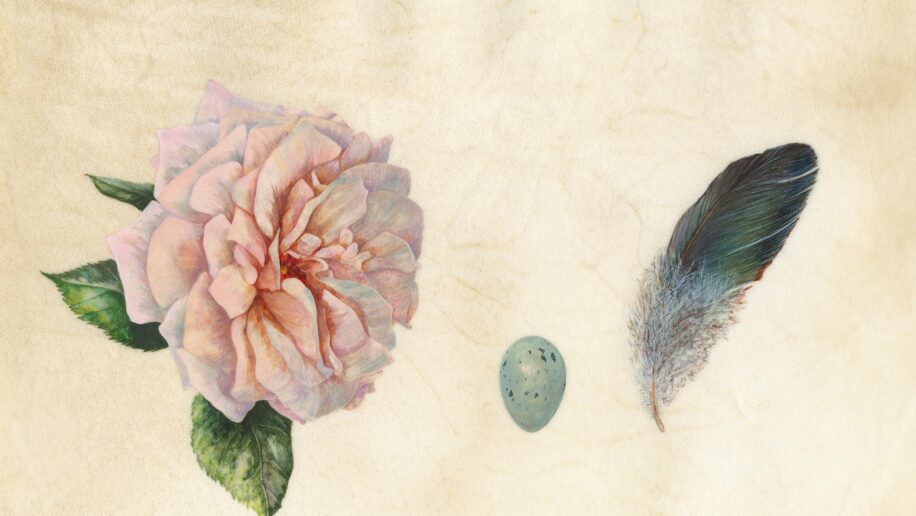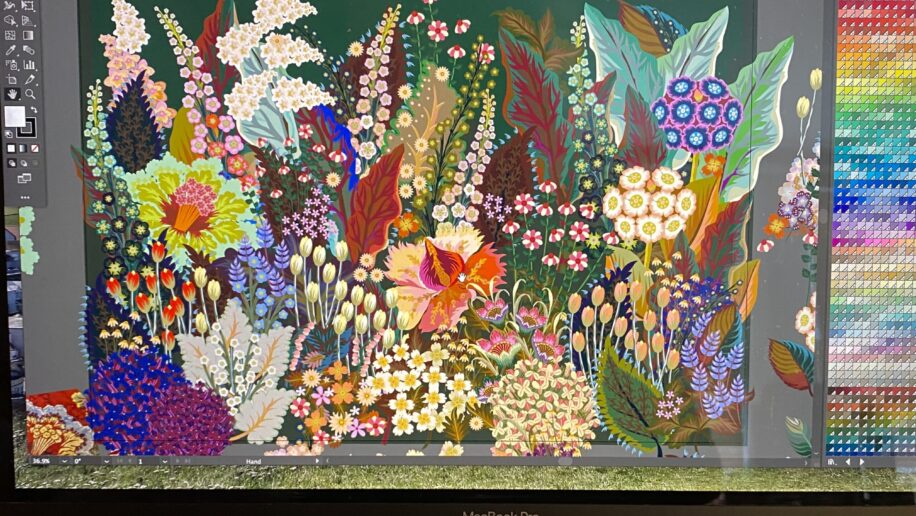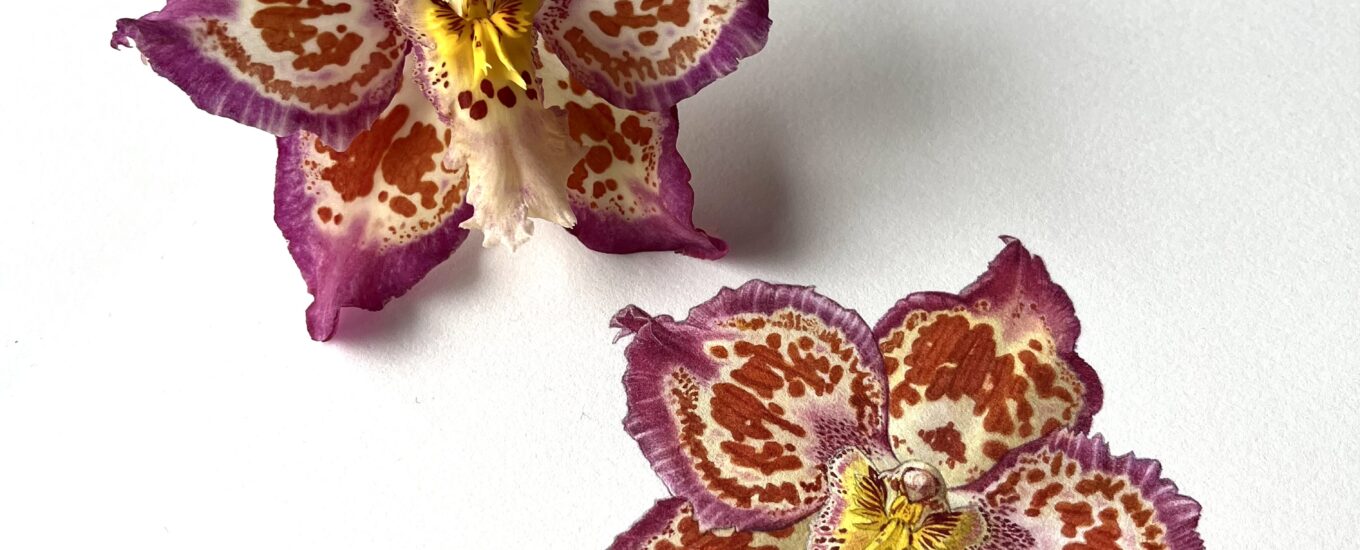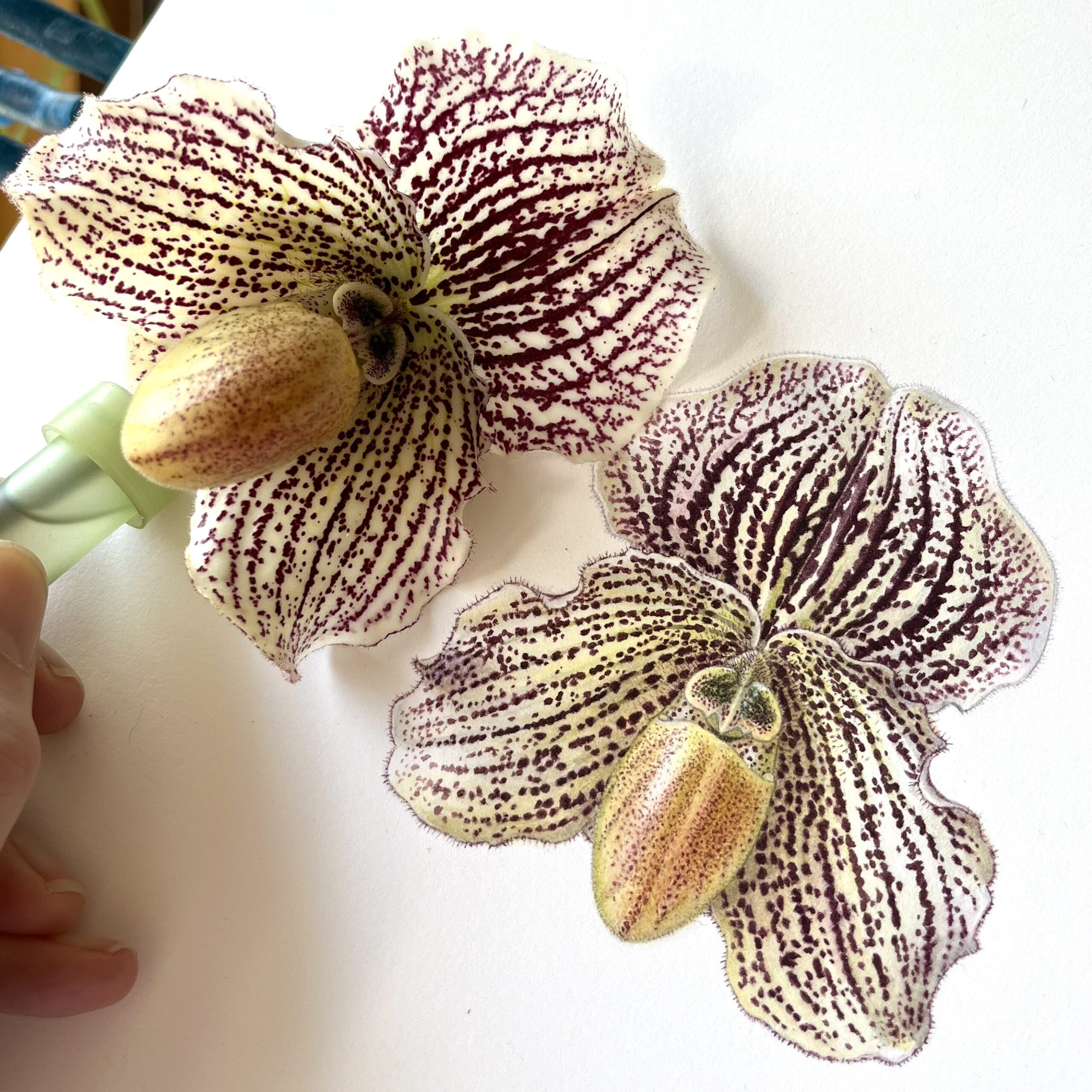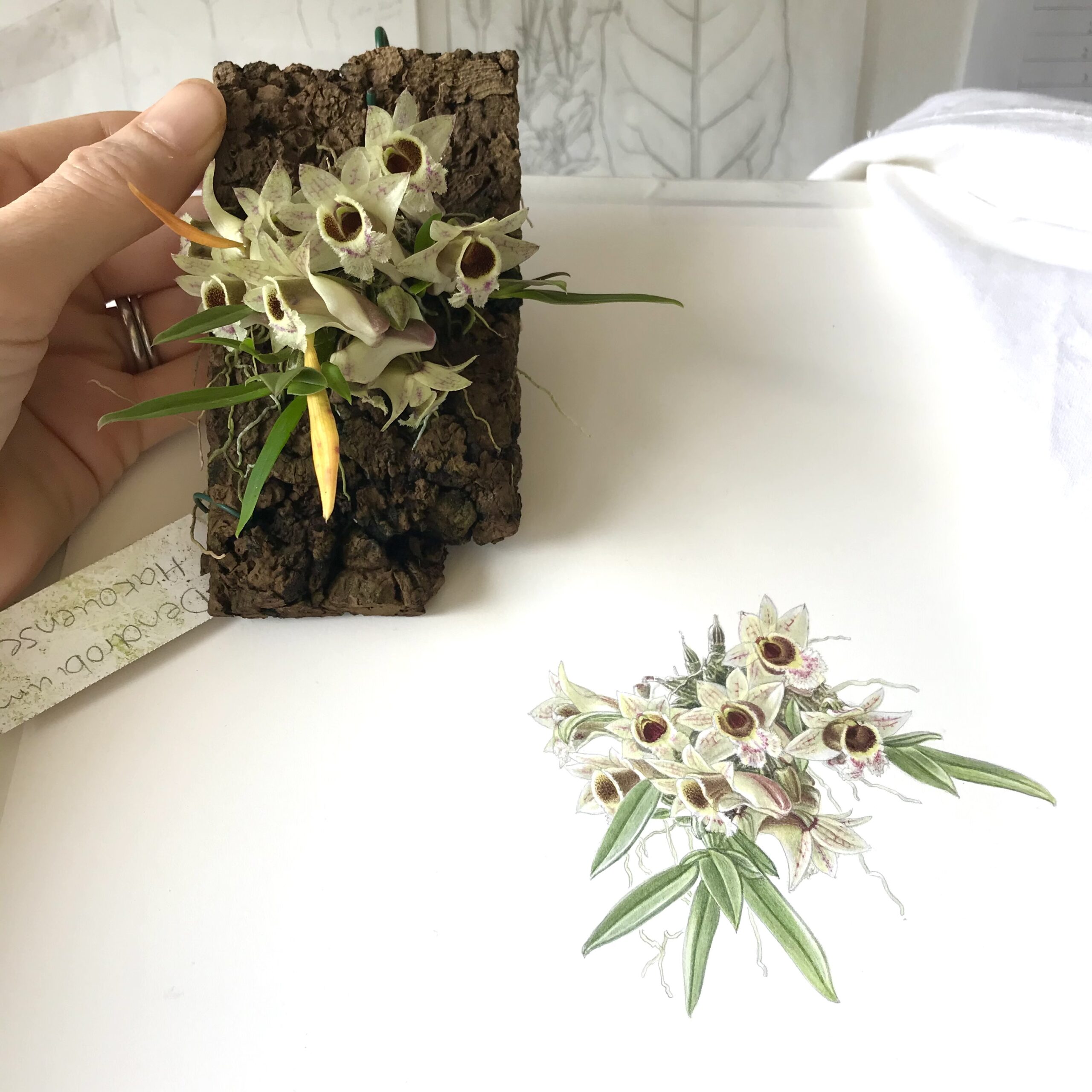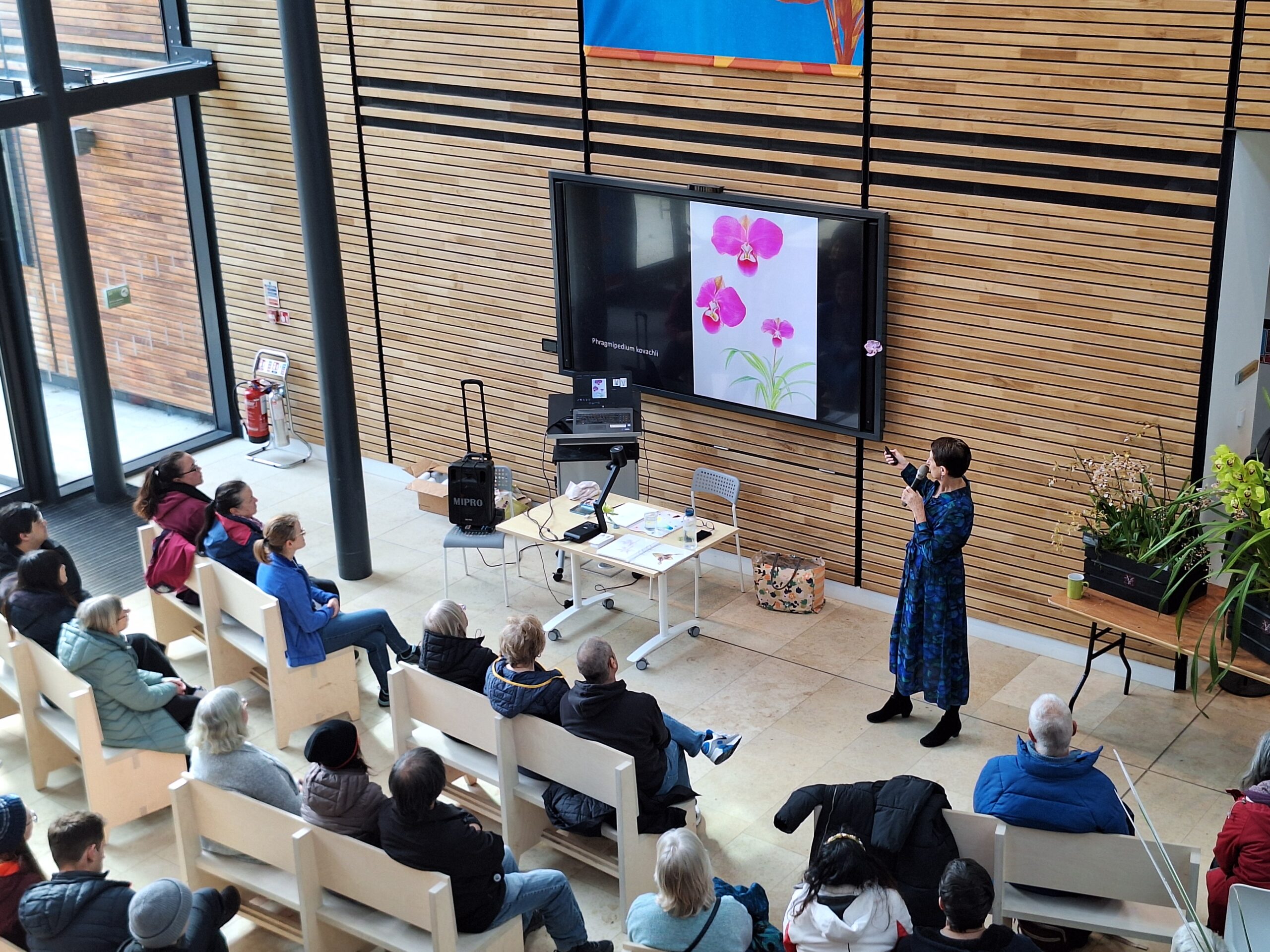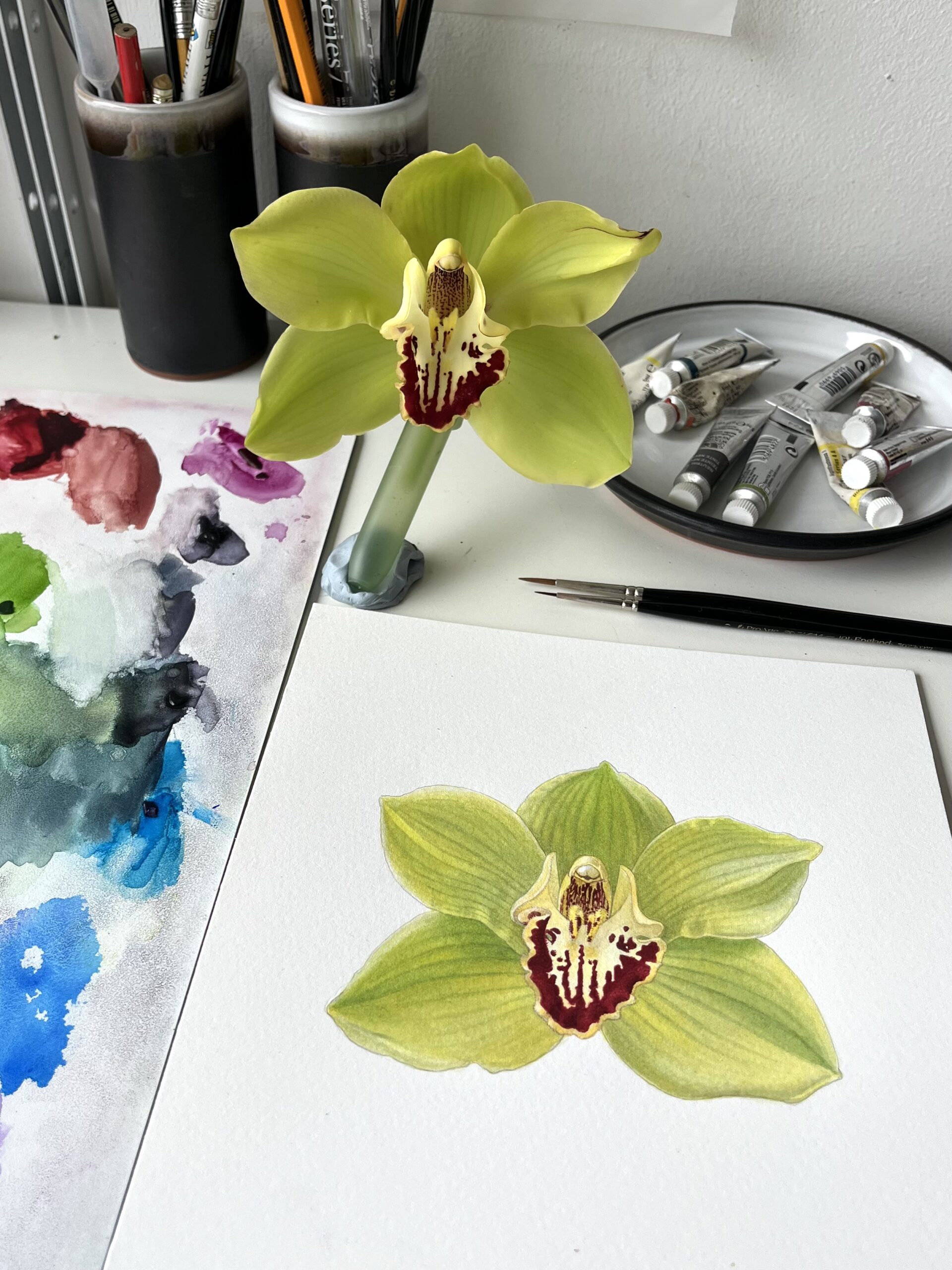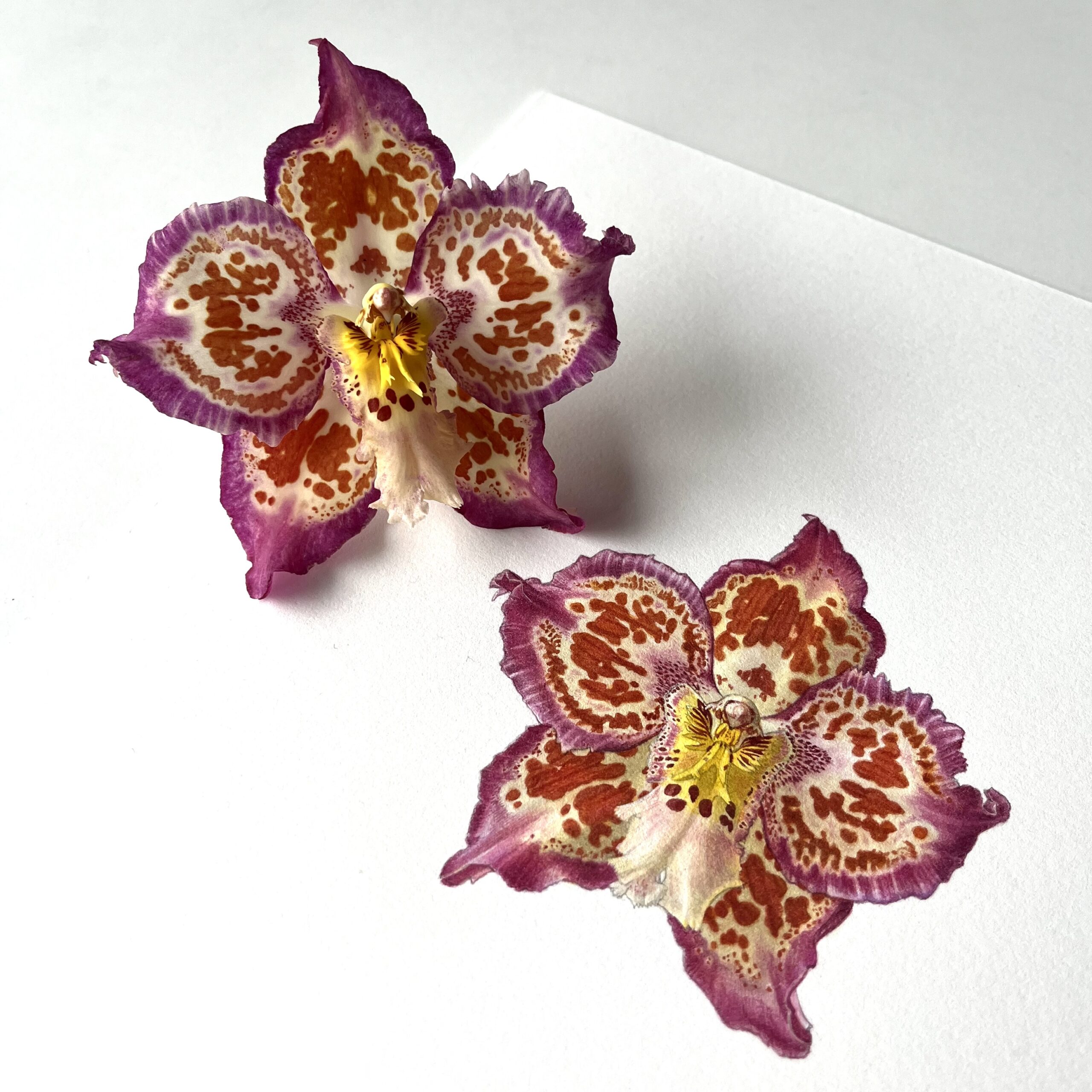Do you have any favourite gardens to visit or places to immerse yourself in nature?
I think I have investigated all the little green places in London over the years I have lived here. I love Brunswick Square with its magnificent ‘Baobab’ Plane trees. Formerly a part of the Foundling hospital grounds, what history they have overseen!
Further afield, I spend a lot of time walking in the South Downs. At this stage, I think every one of my family and friends have been inveigled into plant hunting of some sort with me.
In early 2025, I joined an orchid hunting trip to Madagascar. We spent our days creeping through the forests, spotting orchids and recording our finds in sketches and photographs. It was an intoxicating experience being immersed in thick rainforest with plants in every dimension around me. I look forward to returning in January of 2026 for a longer expedition and thereafter I plan to produce a series of paintings based on the Orchids of Madagascar.
Who are some other botanical artists working today we should check out?
There are many wonderful artists all over the world producing beautiful and important work. For instance, Sharon Field, firefighter turned botanical artist. Her project 3,000 Days and Counting, in response to climate change is creating a scroll of paintings over 3,000 days.
Also worth checking out is the Plants of the Qur’ān by Sue Wickison, Sue has spent years illustrating the flora mentioned in the text of the Qur’ān. Another is Lucy Smith, known for her beautiful paintings of the enormous floating leaves and giant flowers of the Victoria amazonica waterlilies. She has also created over 700 illustrations for Kew, 250 of which were published recently in Palms of New Guinea.
Most experienced artists also spend some of their time teaching the next generations of upcoming artists. Diane Sutherland, Laura Silburn, Mary Dillion, Julia Trickey and Margaret Best to name but a few, are all wonderful artists themselves too.
Finally, as we are the Garden Museum, can you tell us about your own relationship with plants, gardening and nature?
On a simple level, I have realised that spending time with plants, whether its repotting, dead heading, clipping or even turning compost takes me out of the busy world and makes me feel good. It is stress reducing, soothing, peaceful and with the added benefit of making my surroundings more beautiful.
I am incredibly lucky that my love of plants and art has given me a career. I hope that my work, in any small way, may inspire in others a love and a deeper understanding of our natural world.
Follow Deborah on Instagram: @deborahlambkin
Rory McEwen: Nature’s Song is open until 25 January 2025
Nelly Roberts: Orchid Painter is open until 31 January 2025
